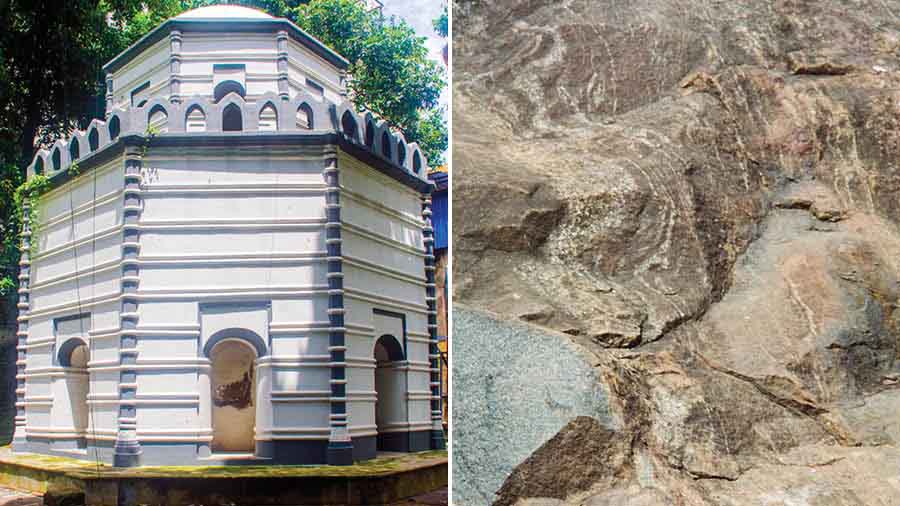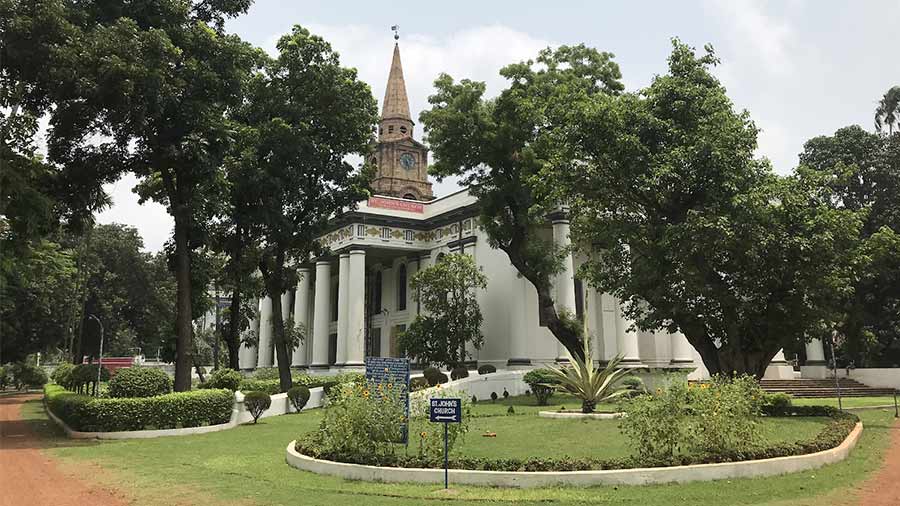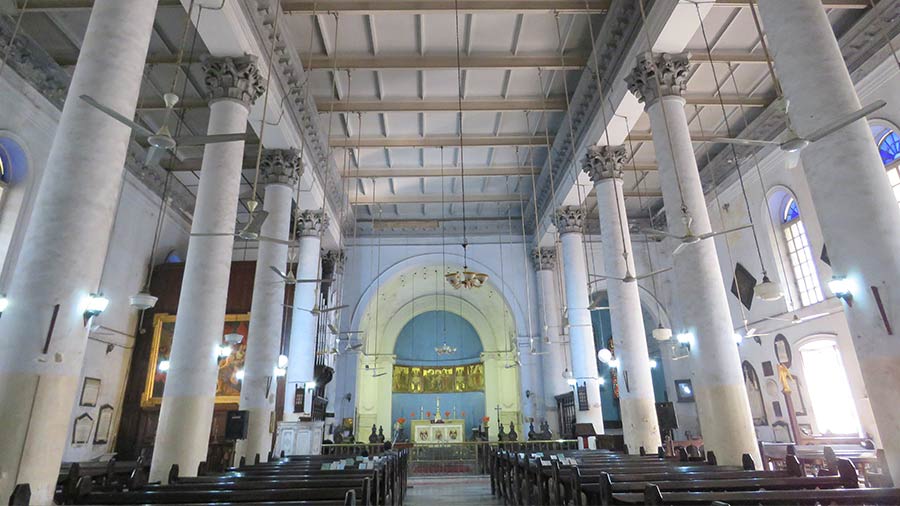Job Charnock was the chief agent of Bengal under the East India Company. On August 24, 1690, Charnock arrived in Sutanuti village (present day north Kolkata) with a permission from the last Mughal emperor, Aurangzeb, to establish a factory in Bengal.
Charnock had once been considered as the founder of Calcutta, and the city celebrated its birthday on August 24. But, things changed on May 16, 2003, when the Calcutta High Court passed a verdict stating that Charnock was not the founder of Kolkata, and neither was August 24 the birthday of the city. It further added that the settlement existed long before the arrival of Charnock.
Charnock enjoyed a flamboyant lifestyle. He rescued a girl from sati and named her Maria. He fathered four children (three daughters and one son) with her. Charnock died on January 10, 1692, and was laid to rest in a cemetery where St. John’s Church would come up almost a century later in 1787.
Charnock’s Mausoleum, Kolkata
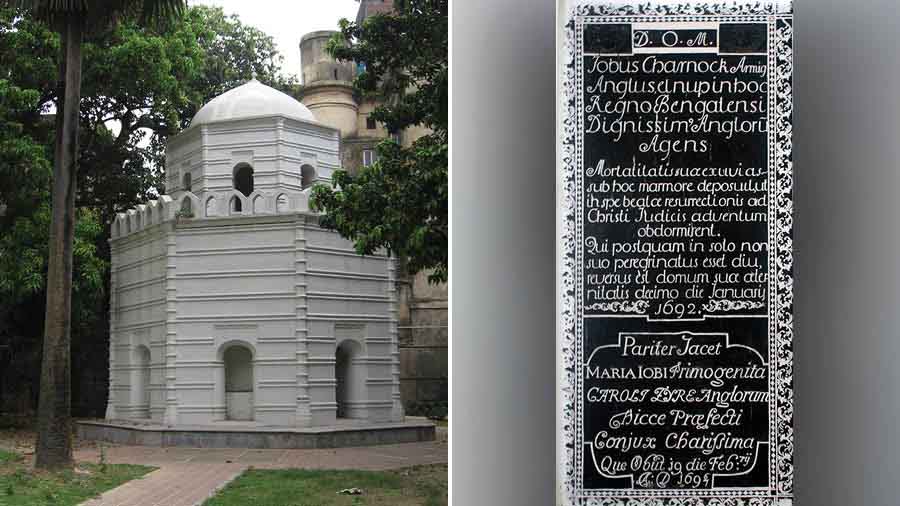
Another look at Charnock’s tomb, and (R) his epitaph in Latin Wikimedia Commons
Charnock’s Mausoleum was constructed a few years later under the initiative of Charles Eyre. Eyre was the husband of Mary – Charnock’s eldest daughter. He brought in stones all the way from Chennai (then Madras) to construct the Moorish octagonal tomb. The tomb also houses several graves including his daughter Mary. Charnock’s epitaph is in Latin and the English translation reads: “In the hands of God Almighty, Job Charnock, English knight and recently the most worthy agent of the English in this Kingdom of Bengal, left his mortal remains under this marble so that he might sleep in the hope of a blessed resurrection at the coming of Christ the Judge. After he had journeyed onto foreign soil he returned after a little while to his eternal home on the 10th day of January 1692. By his side lies Mary, first-born daughter of Job, and dearest wife of Charles Eyre, the English prefect in these parts. She died on 19 February AD 1696–7.”
Discovery of Charnockite
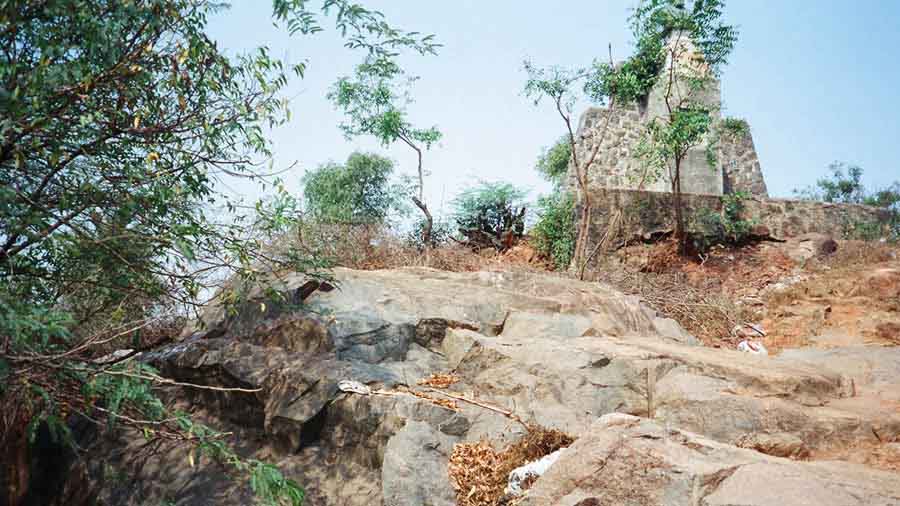
Charnockite rock at Chennai’s St. Thomas Mount Wikimedia Commons
Exactly two centuries after Charnock’s death, geologist Thomas Oldham, working in St. Thomas Mount in Madras came across a new variety of granite. Meanwhile in Calcutta, another geologist, Thomas Henry Holland, extracted samples from Charnock’s tomb and confirmed the rocks were the same. Holland christened the rock as Charnockite after Job Charnock.
St. Thomas Mount is a small hillock located in southern Chennai. The mount is named after St. Thomas, one of the 12 apostles of Jesus, and was instrumental in introducing Christianity to India. Today, a small shrine to St. Thomas, dating back to 1523, stands on top of the mount. It was from this mount Eyre shipped the rocks all the way to Calcutta to construct the tomb of his father-in-law.

St. Thomas Mount in southern Chennai Wikimedia Commons
Charnock’s Tomb is quite likely to be the only Charnockite-built structure in the city, but the story is different for Chennai. Because of its local availability, it has been used extensively in Chennai and one of these structures also has a Charnock connection. St. Mary’s Church, located inside the St. George Fort area, dates back to 1680. The baptismal font (a tub used for baptising) of the church is made of Charnockite. On August 19, 1689, all three of Charnock’s daughters were baptised in that very baptismal font.
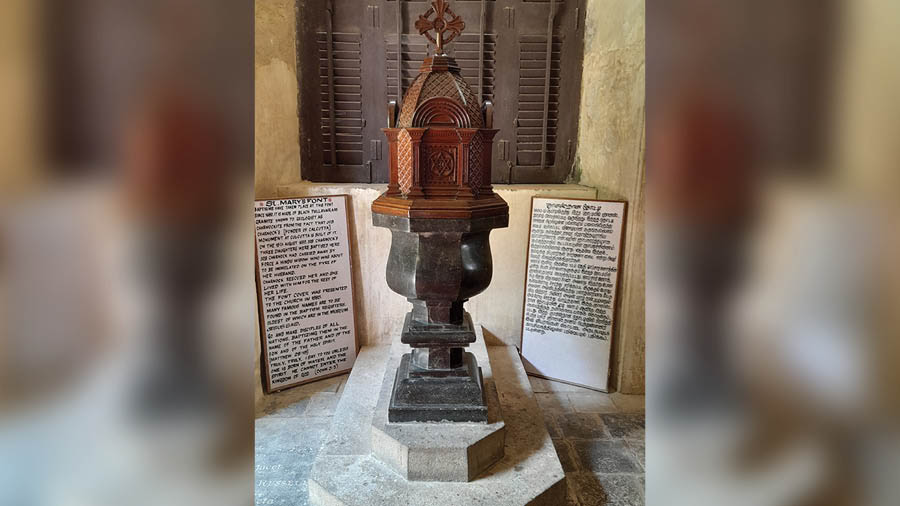
The baptismal font of St. Mary’s Church — made of Charnockite Rangan Datta
Today, Charnock no longer has the distinction of being called the founder of Kolkata, but has etched his name eternally on a stone and will be remembered forever in the books of geology.
Information for visitors
- Charnock’s Mausoleum, Kolkata: Located inside the St. John’s complex, the church and the complex are accessible from Monday to Saturday, 10am to 4pm. There is an entry ticket of ₹10 to be paid in cash. Photography allowed
- St. Thomas Mount, Chennai: The mount and the shrine is open from 7am – 7pm. No entry fee. Photography allowed
- St. Mary’s Church, Chennai: Open from 9am to 5pm. Entry free. The Fort Museum is also located inside the St. George fort area and has a ticket of ₹20 (online payment only). The museum is closed on Friday. Only mobile photography allowed
